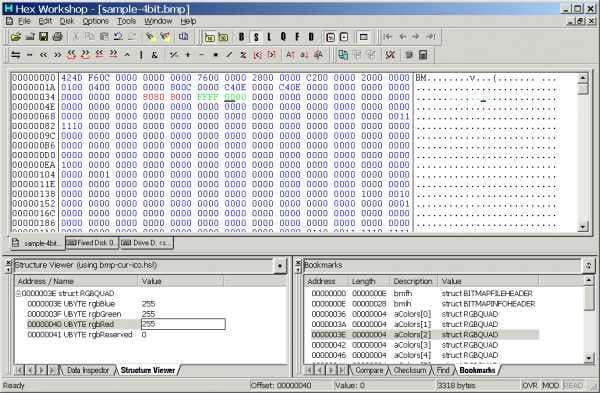
Whatr Is Hex Editor ?
This Is A Very Complicate And Amzaing Software His The First Modification Software For Computer And Its Not Free But U Can Downlod Here Then Its Free Because I am Crack This And What He Work Hes Edit All Apk File And Modify But Some Rules In This Software, A hex editor (or binary file editor or byte editor) is a type of computer program that allows for manipulation of the fundamental binary data that constitutes a computer file. The name 'hex' comes from 'hexadecimal': a standard representation for numbers that has 16 as its base 16, just as the familiar decimal representation has 10 as its base. Because different numerical representations are simply different ways of representing the same quantity, they can be converted into each other. Hence, a hexadecimal representation is an alternative representation for binary numbers, just as a binary number is an alternative representation for decimal numbers, with which we are more familiar. A typical computer file occupies multiple areas on the platter(s) of a disk drive, whose contents are combined to form the file. Hex editors that are designed to parse and edit sector data from the physical segments of floppy or hard disks are sometimes called sector editors or disk editors.
How To Use It ?

The hexadecimal notation is almost universally used in computing - and not without a reason. There are sixteen hex digits - 0 to 9, and A to F (which correspond to decimal values 10 to 15), and each hex digit represents exactly four bits. Exactly two hex digits represent a byte, which can have a value from 00 to FF (that is from 0 to 255 decimal). In order to find a hex value of a multi-byte object, you would concatenate its bytes, for example, bytes 58 A4 1B FE constitute a four-byte value 58A41BFE (or FE1BA458 if the computer uses the reverse byte ordering). But why hexadecimal? Can't we just use good old decimal numbers? Well, they would be fine for a decimal computer, but most contemporary computers are binary and work on bits and bytes. A decimal digit represents approximately 3.3 bits, and this makes arithmetic too complicated. Let's assume we have two bytes with decimal values 243 and 78. What will be the value of the two-byte word? 24378? No, this method works with hexadecimal digits only. To find the decimal value of the word we must compute 243*256+78, which equals to 62286. Does not look very obvious, does it? Imagine finding a value of an eight-byte long variable and you will see why the decimal notation is not the best choice for binary computers.
Rules Of Hex Editor ?

Yes, you should have some understanding of hexadecimal notation; in fact, there is not much else to know. Hex byte is the only kind of object a computer handles, and hex bytes are used to represent anything. For example, a hex byte 50 may represent the capital letter P, the processor command "push eax", the decimal number 80, a color component with 31% brightness, or a zillion of other things.The obvious question is "How can I tell what does the byte represent?" Well, sometimes you can tell that easily, sometimes - not that easily, and in many cases you can't tell that at all. It is usually easy to recognize a character string, but in other cases you will have to guess. Fortunately, it is not as bad as it sounds, and you will quickly pick up a few tricks.But for now it is enough to understand that 1) any computer data is just an array of hex bytes, and 2) a hex editor is a program that shows the true contents of a file, and lets you edit the data you normally can't.
Downlod Here Full Version Carck

Downlod Here Full Version Carck





No comments:
Post a Comment